Abstract
Because there are few persuasive data for selecting one semisynthetic penicillin or cephalosporin over another for treatment of serious staphylococcal infections, 118 recent clinical isolates of Staphylococcus aureus were studied to determine to what extent the presence of β-lactamase affected the relative anti-staphylococcal activity of six penicillins and seven cephalosporins. In addition, the effect of inoculum was studied for its possible effect on the anti-staphylococcal activity of the 13 β-lactam antibiotics. By all criteria, methicillin and nafcillin were clearly more resistant to both the inoculum effect and the production of staphylococcal β-lactamase, whereas benzylpenicillin and cephaloridine (especially benzyl-penicillin) were the most susceptible to these effects. Cephazolin was clearly more susceptible to staphylococcal β-lactamase and heavy inocula than the other cephalosporins (with the exception of cephaloridine), whereas cephalothin was the most resistant cephalosporin to these factors. The minimal inhibitory concentration for benzylpenicillin for tests with undiluted inoculum, compared to results with inoculum diluted 10−4, differed by a factor up to 16,384, whereas with methicillin and nafcillin the differences were rarely more than twofold. Ratios for the other 10 antibiotics fell between these extremes. These results suggest that methicillin or nafcillin is most stable to staphylococcal β-lactamase, and that benzylpenicillin and cephaloridine are the most susceptible.
Full text
PDF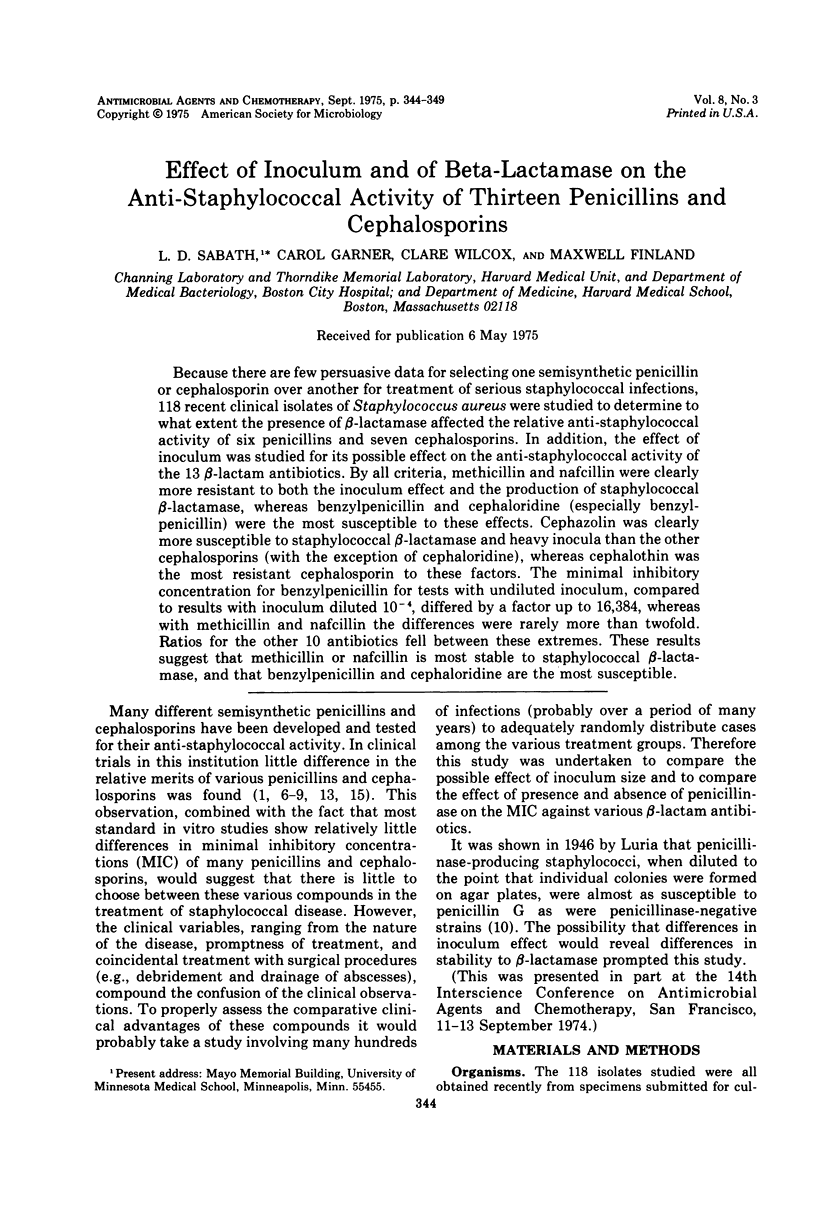
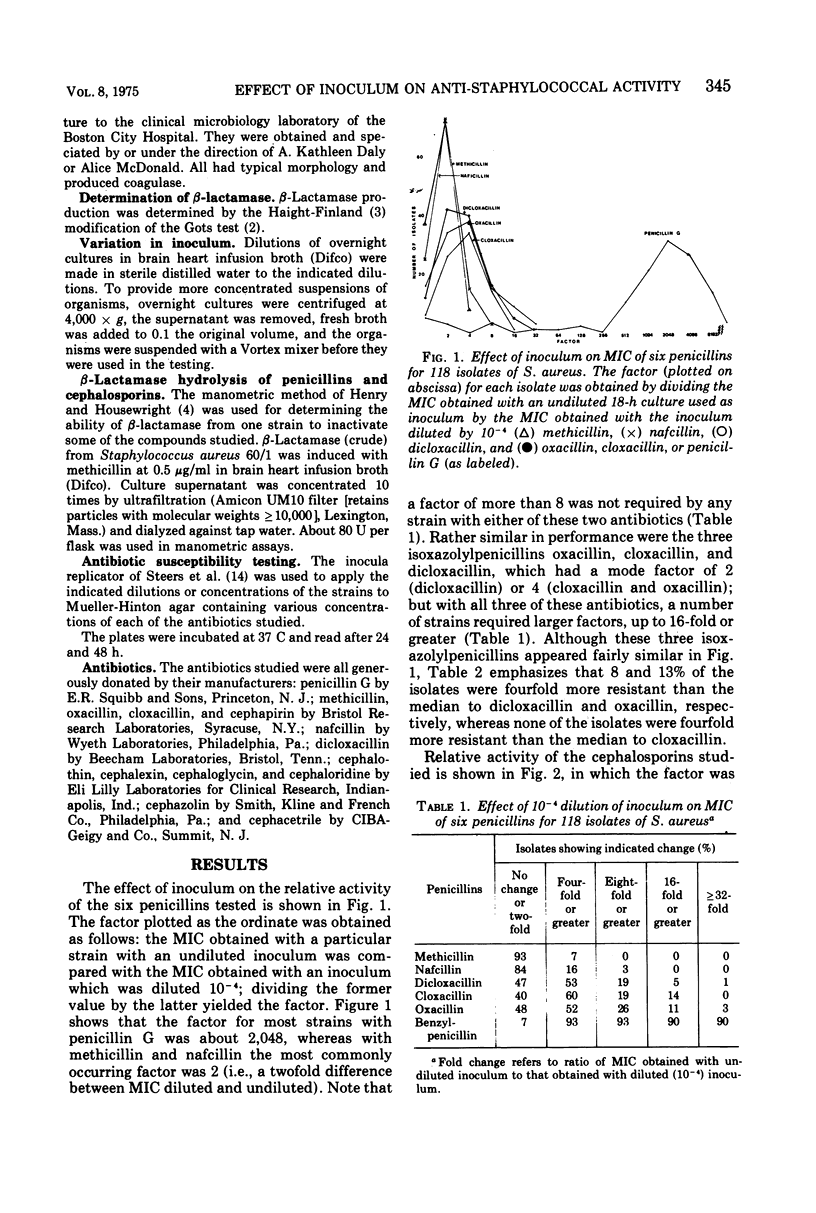
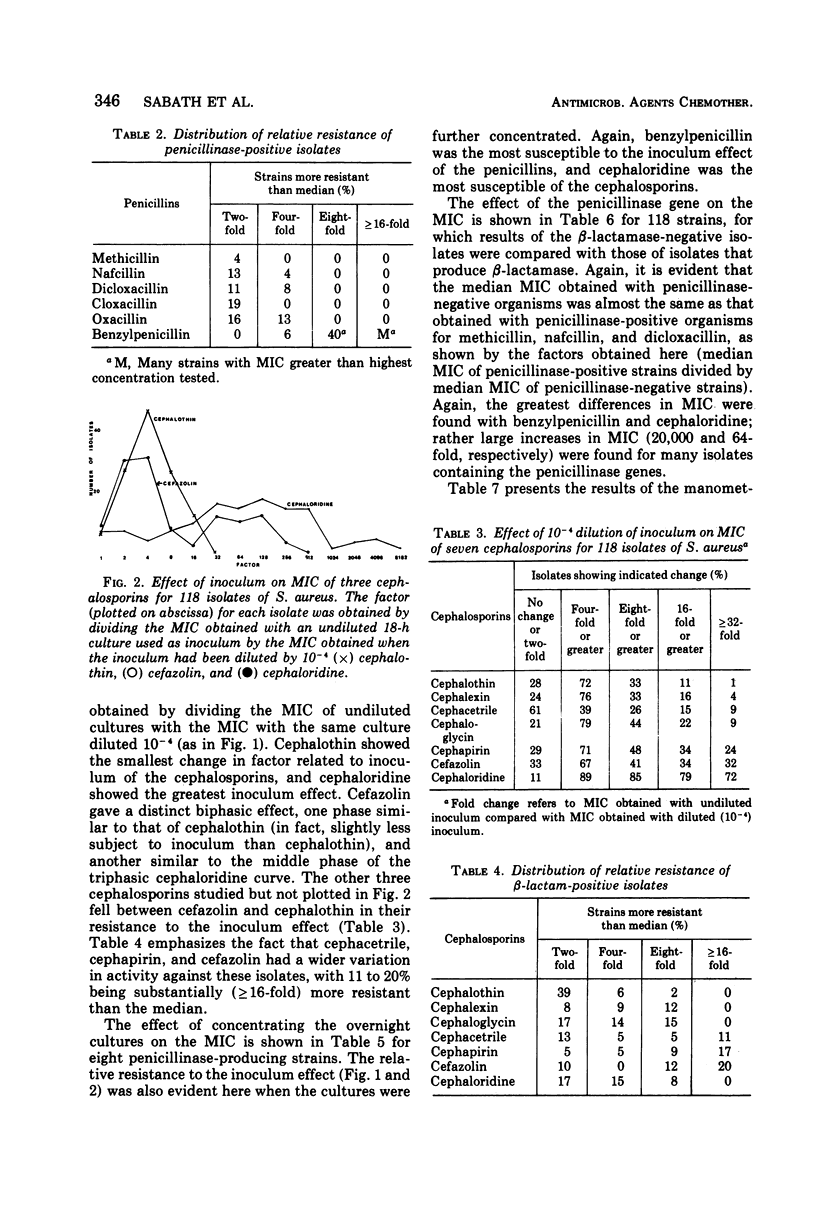
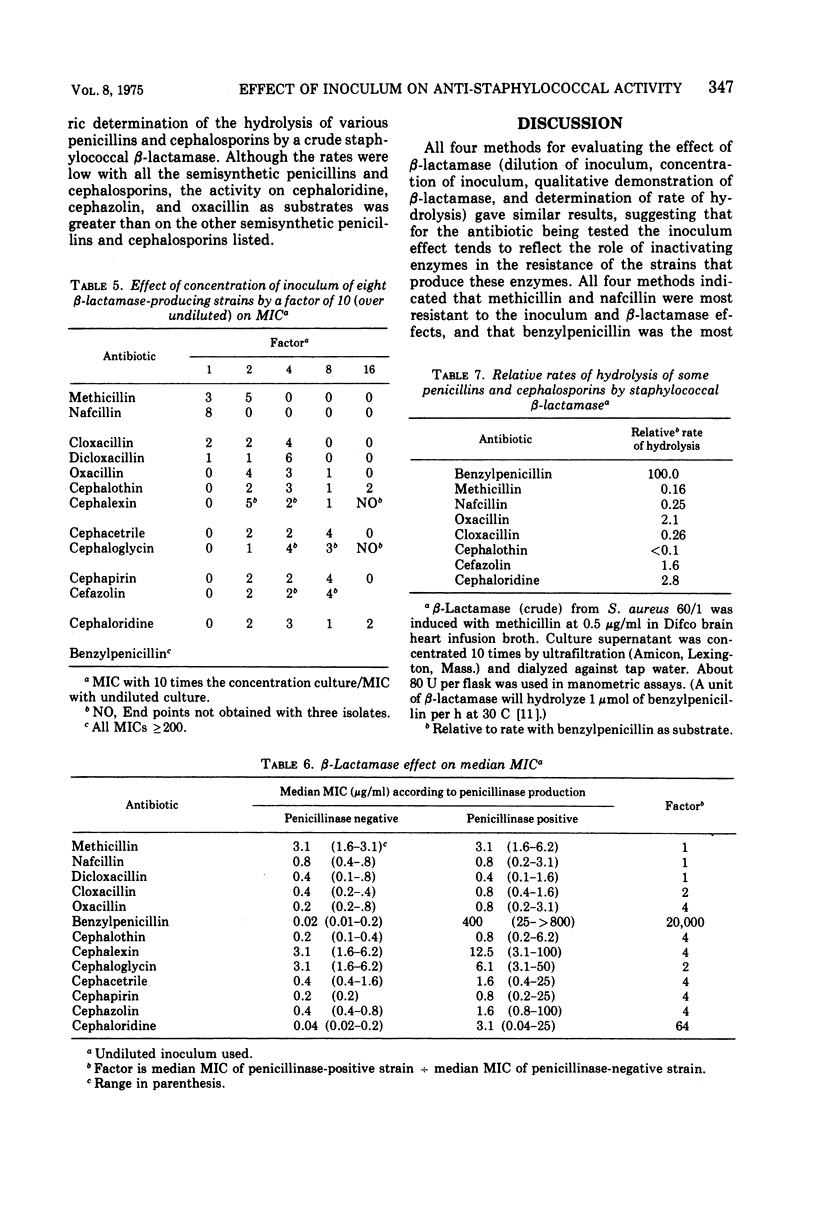
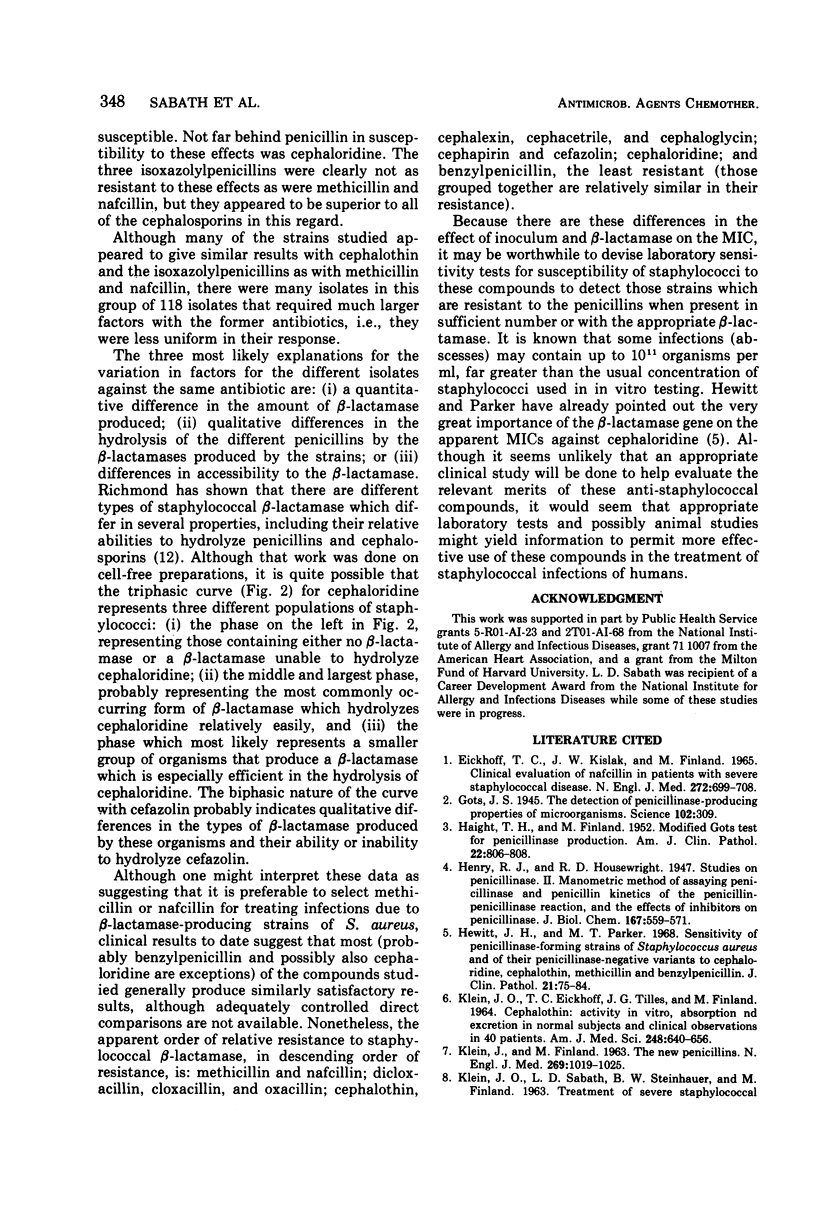
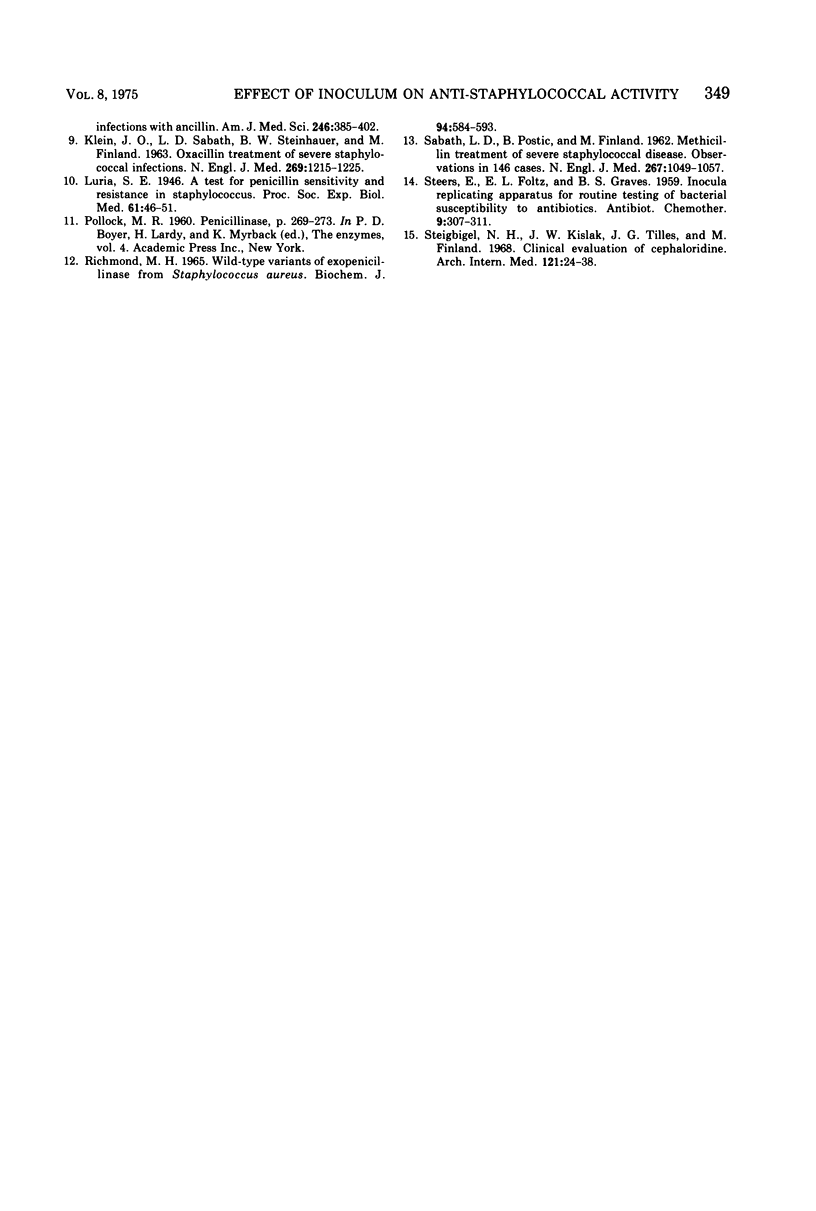
Selected References
These references are in PubMed. This may not be the complete list of references from this article.
- Gots J. S. THE DETECTION OF PENICILLINASE-PRODUCING PROPERTIES OF MICROORGANISMS. Science. 1945 Sep 21;102(2647):309–309. doi: 10.1126/science.102.2647.309. [DOI] [PubMed] [Google Scholar]
- HAIGHT T. H., FINLAND M. Modified Gots test for penicillinase production. Am J Clin Pathol. 1952 Aug;22(8):806–808. doi: 10.1093/ajcp/22.8_ts.806. [DOI] [PubMed] [Google Scholar]
- Hewitt J. H., Parker M. T. Sensitivity of penicillinase-forming strains of Staphylococcus aureus and of their penicillinase-negative variants to cephaloridine, cephalothin, methicillin, and benzylpenicillin. J Clin Pathol. 1968 Jan;21(1):75–84. doi: 10.1136/jcp.21.1.75. [DOI] [PMC free article] [PubMed] [Google Scholar]
- KLEIN J. O., EICKHOFF T. C., TILLES J. G., FINLAND M. CEPHALOTHIN: ACTIVITY IN VITRO, ABSORPTION AND EXCRETION IN NORMAL SUBJECTS AND CLINICAL OBSERVATIONS IN 40 PATIENTS. Am J Med Sci. 1964 Dec;248:640–656. [PubMed] [Google Scholar]
- KLEIN J. O., FINLAND M. THE NEW PENICILINS. N Engl J Med. 1963 Nov 7;269:1019–CONTD. doi: 10.1056/NEJM196311072691907. [DOI] [PubMed] [Google Scholar]
- KLEIN J. O., SABATH L. D., STEINHAUER B. W., FINLAND M. OXACILLIN TREATMENT OF SEVERE STAPHYLOCOCCAL INFECTIONS. N Engl J Med. 1963 Dec 5;269:1215–1225. doi: 10.1056/NEJM196312052692301. [DOI] [PubMed] [Google Scholar]
- KLEIN J. O., SABATH L. D., STEINHAUER B. W., FINLAND M. TREATMENT OF SEVERE STAPHYLOCOCCAL INFECTIONS WITH ANCILLIN. Am J Med Sci. 1963 Oct;246:385–403. doi: 10.1097/00000441-196310000-00001. [DOI] [PubMed] [Google Scholar]
- RICHMOND M. H. WILD-TYPE VARIANTS OF EXOPENICILLINASE FROM STAPHYLOCOCCUS AUREUS. Biochem J. 1965 Mar;94:584–593. doi: 10.1042/bj0940584. [DOI] [PMC free article] [PubMed] [Google Scholar]
- SABATH L. D., POSTIC B., FINLAND M. Methicillin treatment of severe staphylococcal disease. Observations in 146 cases. N Engl J Med. 1962 Nov 22;267:1049–1057. doi: 10.1056/NEJM196211222672101. [DOI] [PubMed] [Google Scholar]
- Steigbigel N. H., Kislak J. W., Tilles J. G., Finland M. Clinical evaluation of cephaloridine. Arch Intern Med. 1968 Jan;121(1):24–38. [PubMed] [Google Scholar]


